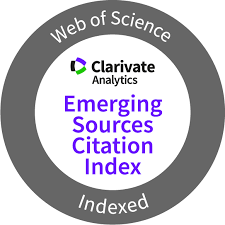Ash related problems with high alkalii biomass and its mitigation - experimental evaluation
evaluación experimental
Keywords:
Biomass ash, Alkalii, Leaching, Fusion, FoulingAbstract
Biomass is regarded as a renewable source of energy and is playing a role in future fuel supply trend, with great acceleration. However, due to the chemical composition of the ash of certain types of biomass (particularly short rotation crops like grasses, canes and straws), boiler
related problems have occurred systematically in the past. These fuels are rich in alkaline metals (potassium, phosphorus, chlorine and sodium) which form complex eutectic salts that effectively lower the melting point of the ashes during combustion and cause fouling and slagging problems, especially in superheater tubes. This work reviews the latest investigations regarding the prediction of these problems through the evaluation of the ashes in the laboratory and discuss their mitigation by fuel leaching and blending. As a means to demonstrate the methodology, experimental data related to the evaluation of the Common Cane are presented, resulting from our own laboratory tests. These include fusion/sintering tests of ashes sampled from canes in the as-is and waterleached condition and the comparisons with other more traditional biomasses. The results show that the as-is state would be unacceptable to burn, but leaching with water and/or blending with
more stable ashes reduces the detrimental effects on boiler components to a tolerable level.
Downloads
References
[2] R. Saidur, “A review on biomass as a fuel for boilers,” Renewable and Sustainable Energy Reviews, n° 15, pp. 2262–2289, 2011.
[3] A. A. Khan, W. D. Jonga, P. J. Jansens and H. Spliethoff, “Biomass combustion in fluidized bed boilers: potential problems and remedies,” Fuel Process Technology, vol. 90, n° 1, pp. 21–50, 2009.
[4] M. J. Fernandez Llorentea and J.E. Carrasco Garcia, “Comparing methods for predicting the sintering of biomass ash in combustion,” Fuel, vol. 84, n° 14-15, pp. 1893–1900, Oct., 2005.
[5] E. RAASK. Mineral impurities in coal combustion: behavior, problems, and remedial measures. New York: Hemisphere Publishing, 1985.
[6] S. VAN LOO y J. KOPPEJAN, Handbook of Combustion and Co-Firing, 2008.
[7] T. R. MILES, T. R. jnr. MILES, L. L. BAXTER, R. W. BRYERS, B. M. JENKINS, and L. L. ODEN, Alkali Deposits Found in Biomass Power Plant: A Preliminary Study of their Extent and Nature. Golden: National Renewable Energy Laboratory, 1995.
[8] B.-J. SKRIFVARS, J.-P. BLOMQUIST, M. HUPA and R. BACKMAN, “Predicting the ash behavior during biomass combustion in FBC conditions by combining advanced fuel analyses with thermodynamic multi-component equilibrium calculations,” presented at the 15th International Coal Conference, Pittsburgh, US, Sep., 1998.
[9] M. ZEVEN HOVEN, B.-J. SKRIFVARS, P.YRJAS, M. HUPA, L. NUUTINEN and R. LAITINEN “Searching for improved characterisation of ash forming matter in biomass”, in Proceedings of the 16th ASME International FBC Conference, Reno, Nevada, US, 2001.
[10] M. Hupa, “Ash-related issues in fluidized-bed combustion of biomasses: recent research highlights,” Energy Fuels, vol. 26, n° 1, pp. 4–14, 2012.
[11] D. Koza and S. Ma, “Options for biomass fuels utilization in power plants,” Power Engineering, vol. 115, n° 5, pp. 60-68, 2011.
[12] A. Monti, N. D. Virgilio and G. Venturi, “Mineral composition and ash content of six major energy crops,” Biomass Bioenergy, n° 32, pp. 216–23, 2008.
[13] C. A. Jordan and G. Akay, “Speciation and distribution of alkali, alkali earth metalsand major ash forming elements during gasification of fuel cane bagasse,” Fuel, vol. 91, n° 1, pp. 253–263, 2012.
[14] D. Vamvuka, D. Zografos and G. Alevizos, “Control methods for mitigating biomass ashrelated problems in fluidized beds,” Bioresource Technology, vol. 99, pp. 3534–3544, 2008.
[15] G. Dunnu, J. Maier and G. Scheffknecht, “Ash fusibility and compositional data of solid recovered fuels,” Fuel, vol. 89, n° 7, pp. 1534–1540, 2010.
[16] D. Vamvuka, E. Kakaras, “Ash properties and environmental impact of various biomass and coal fuels and their blends,” Fuel Processing Technology, vol. 92, n° 3, pp. 570–581, 2011.
[17] S. V. Vassilev, D. Baxter, L. K. Andersen and Ch. G. Vassileva, “An overview of the behaviour of biomass during combustion: part II. Ash fusion and ash formation mechanisms of biomass types” Fuel, vol. 117, pp. 152–183, 2014.
[18] A. Saddawi. Commodity fuels from biomass through pretreatment and torrefaction: effects of mineral content on torrefied fuel characteristics and quality,” Energy and Fuels, vol. 26, pp. 6466-6474, 2012.
[19] Ch. Heng Pang, B. Hewakandamby, T. Wu, and E. Lester, “An automated ash fusion test for characterisation of the behaviour of ashes from biomass and coal at elevated temperaturas,” Fuel, vol. 103, pp. 454–466, 2013.
[20] S. V. Vassilev, D. Baxter, L. K. Andersen and Ch. G. Vassileva “An overview of the composition and application of biomass ash. Potential utilisation, technological and ecological advantages and challenges,” Fuel, vol. 105, pp.19–39, 2013.
[21] E. Butler, G. Devlin, D. Meier and K. McDonnell, ”Characterisation of spruce, salix, miscanthus and wheat straw for pyrolysis applications” Bioresource Technology, vol. 131, pp. 202–209, 2013.
[22] L. Deng, T. Zhang and D. Che, “Effect of water washing on fuel properties, pyrolysis and combustion characteristics, and ash fusibility of biomass” Fuel Processing Technology, vol. 106, pp. 712–720, 2013.
Downloads
Published
How to Cite
Issue
Section
License
Copyright (c) 2019 Blas Melissari

This work is licensed under a Creative Commons Attribution 4.0 International License.


















